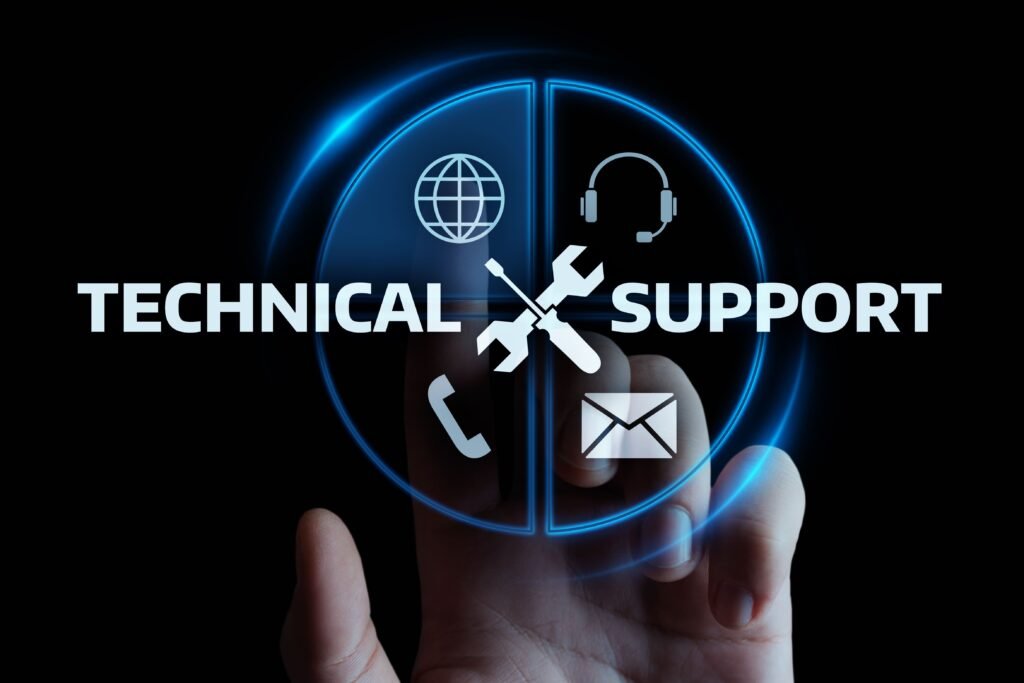Mobile AppHow to Scale Your Mobile App Post-Launch: Support & Maintenance Services

Table of Contents
Introduction: Launching Is Not the Finish Line
Many businesses celebrate the launch of their mobile app as the final milestone in their product journey. But in reality, launching is just the beginning. The most successful apps—think WhatsApp, Uber, Zomato, and Duolingo—didn’t become household names overnight. They evolved, adapted, and scaled through consistent updates, strong post-launch support, and performance monitoring.
Studies show that over 70% of mobile app users churn within the first 30 days if post-launch experience is poor (Localytics). That’s why investing in a strategic post-launch scaling and maintenance plan is critical. As a trusted mobile app partner in Chennai, we help businesses like yours plan for success beyond the app store.
Why Post-Launch Scaling Matters in 2025
1. User Expectations Are Higher Than Ever
In the hyper-competitive app ecosystem, users demand flawless performance, quick updates, seamless navigation, and data security. If your app doesn’t deliver continuously, users will uninstall and never look back.
2. Platforms Evolve Rapidly
Both Android and iOS roll out multiple OS updates yearly. Without consistent compatibility updates, even the best-built app may crash, suffer UI issues, or become non-functional.
3. Growth Requires Continuous Optimization
Your launch version is just the MVP. To stay competitive, your app must scale—more features, more users, and more data—without compromising performance or security.
Core Areas of Post-Launch Mobile App Maintenance
1. Bug Fixing and Patch Updates
Even after thorough QA, bugs surface when real users interact with the app on various devices and networks. Addressing these promptly maintains trust and app store ratings.
2. OS & Device Compatibility
New iOS and Android devices are released annually. Ensuring that your app functions smoothly across all versions and devices is crucial for retaining users.
3. UI/UX Enhancements Based on User Behavior
Through heatmaps, analytics, and A/B testing, user behavior reveals areas of friction. Small design tweaks—such as repositioning a CTA—can improve conversions by up to 35%.
4. Backend Monitoring & Server Optimization
Scaling the app’s backend infrastructure ensures the app can handle spikes in traffic, high data loads, and real-time processing without downtime.
Essential Support Services for Growth & Stability
1. Dedicated Technical Support Team
Having a responsive support team resolves:
- User complaints
- Downtime issues
- Bug reports
- Urgent escalations
Our dedicated app development teams include full-time QA and support engineers for this very reason.
2. Analytics & Performance Monitoring Tools
Using tools like Firebase, AppDynamics, or Mixpanel, we track:
- Crashes per user session
- Load times
- Funnel drop-offs
- User engagement metrics
This data informs updates and future feature prioritization.
How to Collect, Analyze & Act on User Feedback
1. In-App Feedback Mechanisms
Prompt users to share feedback at the right moments—like after placing an order or completing a task.
2. App Store Reviews Monitoring
- Positive reviews drive downloads. But negative reviews, if unresolved, hurt discoverability and trust. Replying to and acting on app store feedback is a vital post-launch practice.
3. Net Promoter Score (NPS) & Surveys
Gauge user satisfaction and loyalty with NPS. Use feedback to uncover pain points, product gaps, and new feature demands.
Scaling for Performance, Traffic, and Features
1. Scaling Infrastructure for User Growth
As your user base grows, your architecture must evolve too:
- Load balancers
- Auto-scaling cloud infrastructure (AWS, GCP)
- Data caching
- Microservices migration
Failure to scale backend can cause downtime, slow performance, and lost revenue.
2. Introducing New Features in Phases
New features must be rolled out incrementally, A/B tested, and monitored. A successful example includes:
- Feature flags to control visibility
- Beta user groups for feedback
- Analytics-driven validation
3. Optimizing for User Retention
Leverage AI and ML for:
- Personalized recommendations
- Behavioral notifications
- Smart onboarding flows
As experts in AI-driven mobile apps, we’ve seen clients increase user retention by 30–50% post-AI integration.
Security, Compliance & Platform Updates
1. Data Privacy Laws Are Evolving
With growing regulations like GDPR, HIPAA, and CPRA, staying compliant post-launch is critical. Violations can lead to bans and lawsuits.
2. Security Patch Management
Regular security audits, penetration testing, and patch deployments prevent breaches, leaks, and ransomware attacks.
3. App Store Guidelines Change Frequently
Apple and Google frequently update their policies around permissions, monetization, and design standards. Failing to comply can get your app delisted.
Real-World Case Studies (Confidential Signed NDA)
Case Study 1: Retail App Scaling Post-Launch
Challenge: A fashion retailer launched an MVP with basic browsing and purchase features.
Post-Launch Services Provided:
- Monthly analytics audits
- AI-based recommendation engine
- Payment gateway optimization
- Loyalty program rollout
Results:
- 42% increase in average order value
- 29% jump in daily active users (DAUs)
- App store rating improved from 3.9 to 4.6
Case Study 2: Healthcare App Stability & Compliance
Challenge: A telemedicine app suffered from frequent crashes post-launch due to growing users and complex compliance needs.
Our Strategy:
- Backend optimization
- HIPAA audit support
- 24/7 support team assigned
Outcome:
- 99.98% uptime within 2 months
- 2x growth in doctor signups
- Client secured Series A funding
Cost of Post-Launch Support & Maintenance
The cost depends on app complexity, user volume, and support depth.
Sample Monthly Cost Range
App Type | Estimated Monthly Maintenance Cost |
Simple App | $500 – $1,500 |
Medium Complexity App | $1,500 – $3,000 |
Complex App (AI, APIs) | $3,000 – $7,000+ |
Support includes:
- Bug fixes
- Monitoring tools
- Monthly updates
- Minor feature enhancements
- OS & device compatibility updates
Partnering With a Mobile App Company That Prioritizes Scale
Scaling an app post-launch isn’t an afterthought—it’s a growth strategy. At TechHeaders, we specialize in:
- SLA-driven maintenance contracts
- Dedicated post-launch support teams
- AI-enhanced retention and engagement strategies
- 24/7 server monitoring and security patching
Our blogs offer additional strategies for app growth, user engagement, and performance tuning.
Conclusion: Sustaining Long-Term Growth Post-Launch
Your app’s success depends on what you do after the launch—not before it.
A well-maintained app retains users, adapts to market changes, complies with new policies, and evolves based on real feedback. Skipping post-launch investment leads to poor ratings, user churn, and stagnation.
Looking for a reliable mobile app development company in Chennai that offers complete post-launch maintenance and scaling services?
Talk to our experts today and future-proof your app investment.
FAQs
1. How often should I update my mobile app post-launch?
Ideally every 2–4 weeks with performance updates, new features, or bug fixes.
2. What happens if I don’t maintain my app after launch?
Expect increased user churn, compatibility issues, security risks, and negative reviews.
3. How do I prioritize post-launch features?
Use analytics, user feedback, and behavior tracking to guide your product roadmap.




